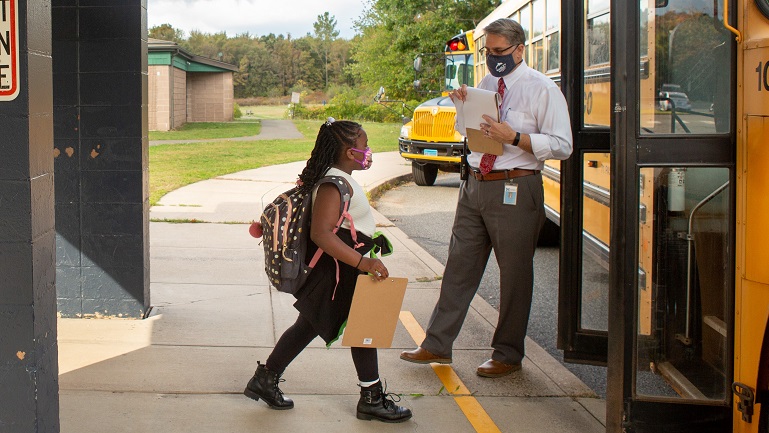Tips for Teachers Returning to the Classroom Post COVID
NMSI |
August 9, 2021
This upcoming school year is unlike any other. For many teachers, this is the first time since March of 2020 that they will be in a classroom full of students. Of course, with the virus spiking again in parts of the country, things could shift, but for now, most schools will resume in-person teaching in the fall.
This crisis will have myriad effects on teaching and learning in the 2021-2022 school year; precisely what those effects entail remains to be seen. What will school look like in the fall? What precautions will need to be taken? Will teaching and learning look different?
We know major disruptions - such as earthquakes, floods, strikes and wars - can cause gaps in learning, and the pandemic disruption is no exception. Education experts predict that teachers will be dealing with the so-called “COVID slide,” which will require additional attention right from the start. Much like the “summer slide” phenomenon, learning loss will need to be addressed.
Beyond the “COVID slide,” there are other things to keep in mind that are also likely to influence students and school communities as they return to the classroom.

Listen, Support and Validate Students
Months of isolation, loss, grief and uncertainty has taken a toll on the mental health of many students. Recently, nearly three in ten parents surveyed said their child was “experiencing harm to their emotional or mental health,” with 45 percent citing the separation from teachers and classmates as a “major challenge.” Suicidal ideation was also on the rise. In addition, students may be experiencing a host of emotions, including anxiety, disappointment and anger.
Even if the emotions are extreme, listening to students’ concerns and expressing understanding and empathy can help provide students with support and validation.
The National Math and Science Initiative (NMSI) offers two programs, Laying the Foundation and the College Readiness Program, which include embedded training for teachers to address social-emotional issues.
Encourage and Provide Honest Reassurance
Learning is difficult if you’re anxiety-ridden. While it’s essential to give anxious students initial assurances that returning to school is okay, offering blanket reassurance statements (e.g., everything will be fine; there is nothing to be worried about) can invalidate and create doubt and uncertainty.
Instead, being open, honest and encouraging is a preferred approach. You may need to acknowledge the risks while emphasizing that precautions reduce those risks. You can empower students by giving them the tools to help them identify the problem and possible solutions, pick a solution and try it.
Model Good Coping Skills for Students
Students look to their teachers as positive role models. How you handle your fears and stress and how you act throughout the day will impact how students assess their situations and react.
Share your own experiences with anxiety and uncertainty, as well as your coping strategies, with students to help them feel less alone. In most cases, it’s appropriate to be open and honest with students in a developmentally appropriate way if and when they ask tough questions about the future. That might include:
-
Helping them understand that future school closures may be a possibility
-
Acknowledging that their friends (or teachers) may become ill with COVID-19
-
Being honest about other unpredicted stressful situations that may occur during the school year
It’s okay to let students know these situations can be upsetting to think about, but that we can try to take things one day at a time and enjoy the current day rather than worry about what the future holds – especially when that future can be somewhat uncertain.
These conversations can be challenging, but helping students develop an ability to be comfortable being uncomfortable may help them cope with future anxieties.
Take Care of Yourself and Know and Respect Your Limits
Our own physical and mental well-being limits our capacity to support others. These past several months have been difficult for teachers, and you may be struggling to keep yourself healthy throughout all of this. You have to show yourself compassion as well as others. Make time to take care of yourself so you can help your students.
If you’re facing challenges that have led to substantial mental health problems for yourself, consider getting professional help rather than trying to manage it all on your own.
There’s no question that this school year will be different and present unique challenges for educators, students and families. Preparation offers the best and most effective hope of meeting those challenges. Working with NMSI can provide you with resources to help you navigate what’s to come.